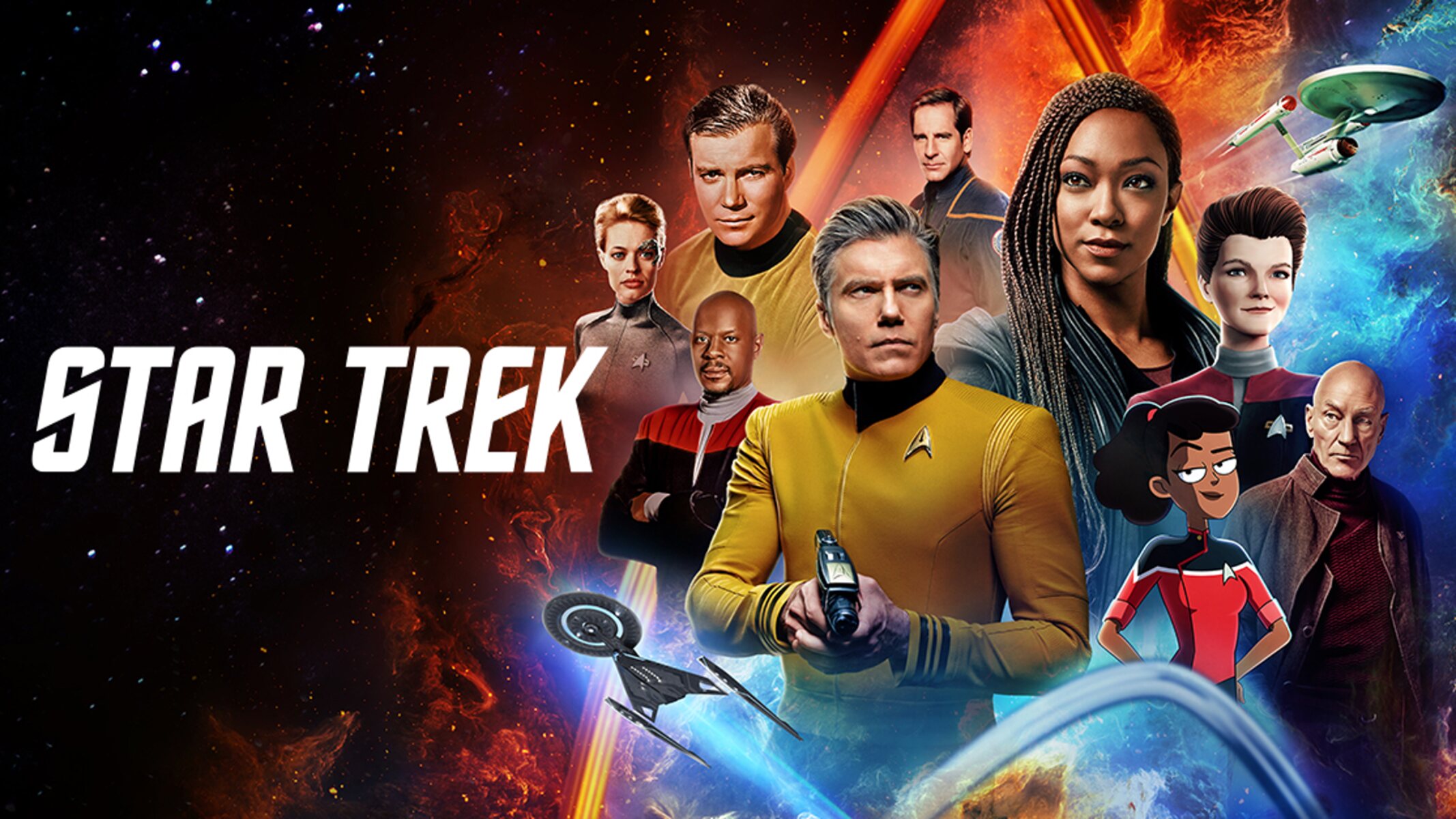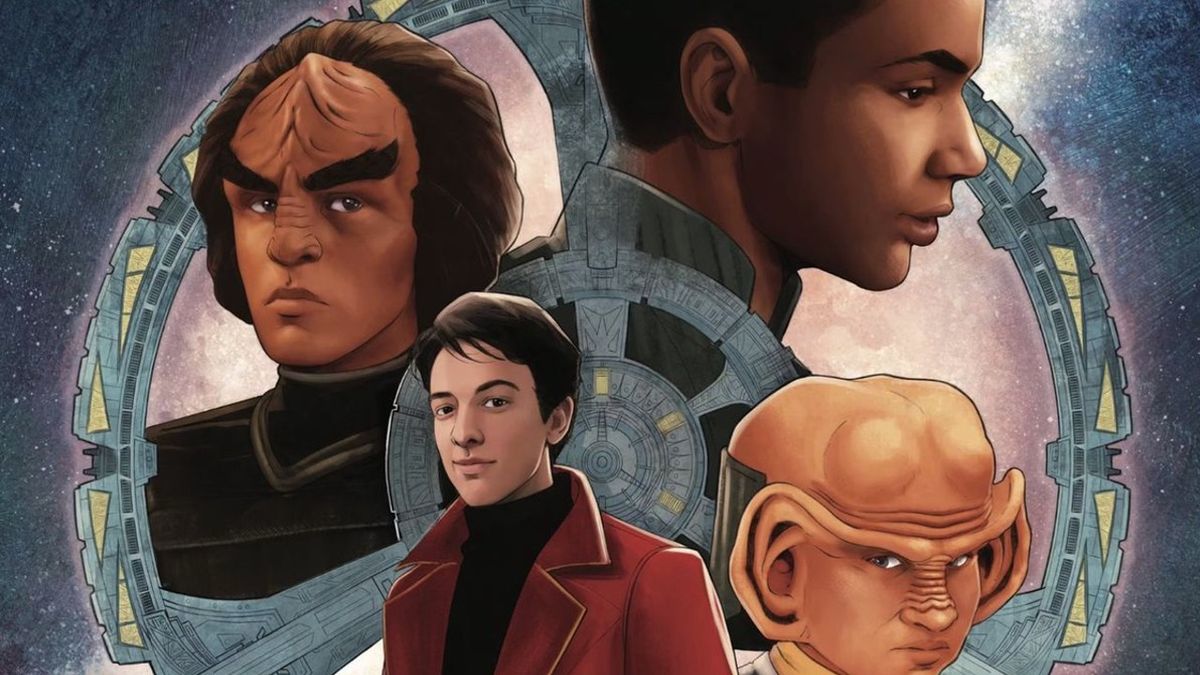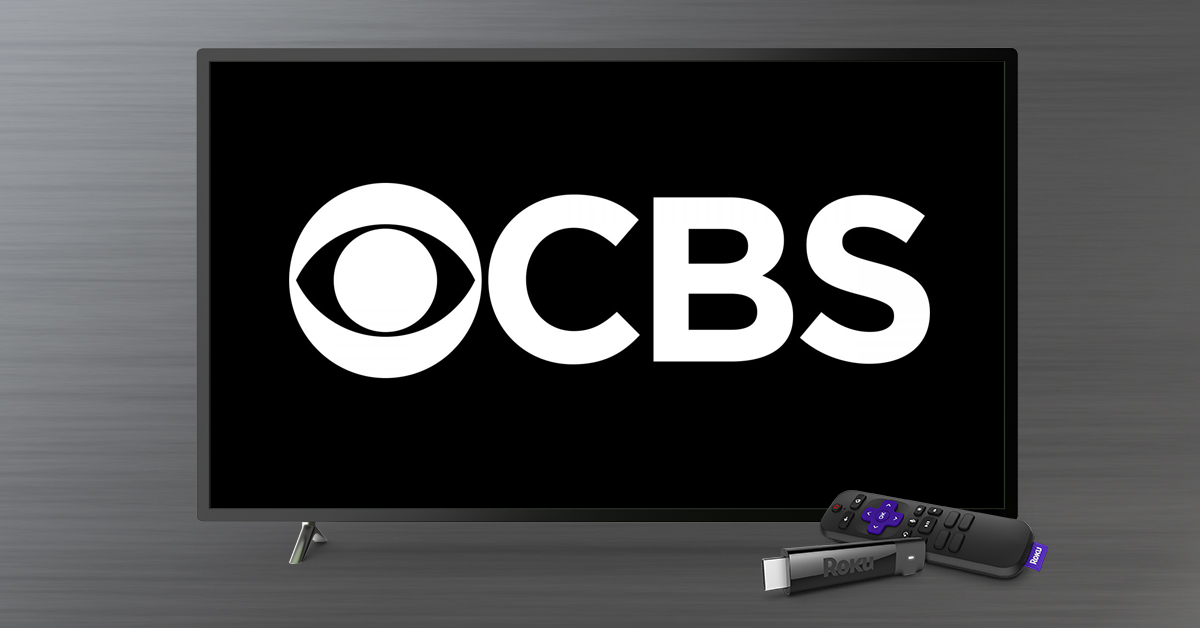Introduction
Star Trek is a beloved science fiction franchise that has captivated audiences for decades. With its rich universe, memorable characters, and thought-provoking themes, it has become a cultural phenomenon. But with multiple TV series and movies spanning several decades, it can be challenging for newcomers to know where to start. In this article, we will explore two different viewing orders that can help you navigate the vast Star Trek universe.
Whether you are a die-hard fan or a curious beginner, the order in which you watch Star Trek can greatly impact your viewing experience. Some viewers prefer to watch the series in chronological order, following the events as they unfold in the Star Trek timeline. Others prefer to watch them in the order they were released, allowing them to experience the evolution of the franchise over time. Both approaches have their merits, and the choice ultimately depends on your personal preferences.
In the following sections, we will delve into the two main viewing orders: the chronological order and the release order. We will provide a brief overview of each series, highlighting their significance in the Star Trek universe. Whether you choose to watch them in chronological order or release order, you are sure to embark on an exciting and immersive journey through the final frontier.
The Chronological Order
Watching Star Trek in chronological order means following the events in the order they occur in the Star Trek universe. This approach provides a comprehensive understanding of the timeline and allows you to witness the progression of technology, society, and storytelling throughout the series. Here is the recommended chronological order:
- Star Trek: Enterprise: Set in the 22nd century, this series serves as a prequel to the entire Star Trek franchise. It explores the early days of space exploration, following the crew of the starship Enterprise as they embark on thrilling adventures.
- Star Trek: Discovery: Taking place roughly a decade before the events of the original series, Discovery introduces viewers to new characters and explores the conflict between the United Federation of Planets and the Klingon Empire.
- Star Trek: The Original Series: This is where it all began. Join Captain James T. Kirk, Spock, and the rest of the iconic crew of the starship Enterprise as they journey across space, encountering strange new worlds and civilizations.
- Star Trek: The Animated Series: This animated series continues the adventures of the original series crew, featuring many of the original actors providing their voices. It adds depth to some of the concepts introduced in the original series.
- Star Trek: The Next Generation: Set approximately 100 years after the original series, The Next Generation introduces a new crew led by Captain Jean-Luc Picard. It explores new threats, diplomatic encounters, and grand philosophical questions.
- Star Trek: Deep Space Nine: Set aboard a space station near the planet Bajor, Deep Space Nine takes a different approach by focusing on the station and its surrounding political tensions. It delves into complex character development and explores the darker side of Star Trek’s universe.
- Star Trek: Voyager: Following the adventures of the starship Voyager and its crew, this series takes place in the far reaches of space. It explores the challenges of survival, encounters with new species, and the quest to find a way back home.
Watching Star Trek in chronological order allows you to witness the gradual development of the Star Trek universe and its themes. It provides a coherent narrative and a fascinating insight into the evolution of the franchise.
Star Trek: Enterprise
Star Trek: Enterprise is the first series in the chronological order of the Star Trek universe. Set in the 22nd century, it explores the early days of space exploration and the formation of the United Federation of Planets. The series follows the adventures of Captain Jonathan Archer and the crew of the starship Enterprise NX-01 as they embark on a mission to explore new worlds, seek out new lifeforms, and boldly go where no one has gone before.
One of the unique aspects of Star Trek: Enterprise is its focus on humanity’s first steps into deep space. Unlike the other series, technology in this era is less advanced, reflecting the early stages of space exploration. The crew faces numerous challenges and encounters hostile alien species, leading to the formation of important alliances such as the Vulcan-Human alliance.
Throughout its four-season run, Star Trek: Enterprise showcases the development of familiar technologies and introduces new elements that lay the foundation for the Star Trek universe. It also dives into the origin of iconic Star Trek species such as the Klingons and explores the history and politics of the Star Trek universe in a time before the United Federation of Planets.
The series features a compelling ensemble cast, with Scott Bakula delivering a standout performance as Captain Jonathan Archer. Viewers will also be introduced to characters like Vulcan science officer T’Pol, chief engineer Trip Tucker, and the enigmatic Dr. Phlox.
Star Trek: Enterprise successfully blends the familiar elements that fans love about Star Trek with a fresh perspective on the early days of space exploration. It provides a unique entry point for newcomers to the franchise and offers long-time fans a deeper understanding of the rich history of the Star Trek universe.
Star Trek: Discovery
Star Trek: Discovery takes place roughly a decade before the events of the original series and is the second series in the chronological order of the Star Trek universe. It introduces viewers to a new cast of characters, innovative storytelling, and a fresh take on the Star Trek lore.
The series follows the exploits of Commander Michael Burnham, portrayed by Sonequa Martin-Green, as she serves aboard the starship USS Discovery during a time of conflict between the United Federation of Planets and the Klingon Empire. Discovery explores the consequences of war, the search for identity, and the moral ambiguities of the Star Trek universe.
With its stunning visuals, complex story arcs, and dynamic characters, Star Trek: Discovery has revitalized the franchise for a new generation of fans. The series pushes the boundaries of Star Trek storytelling, challenging viewers with intricate plots and morally gray situations.
Aside from its engaging narratives, Discovery also boasts a diverse and talented ensemble cast. From the charismatic Captain Gabriel Lorca played by Jason Isaacs to the enigmatic and beloved Captain Philippa Georgiou played by Michelle Yeoh, the characters bring depth and complexity to the series.
One notable aspect of Star Trek: Discovery is its visual design, which presents a modernized and sleeker version of the Star Trek universe. The show excels in its use of state-of-the-art special effects, bringing the space battles and alien encounters to life with breathtaking precision.
Star Trek: Discovery has been praised for its willingness to explore new territory within the Star Trek universe while maintaining the essence of what makes Star Trek special. It tackles relevant social and political issues, portraying a future that reflects our present struggles and aspirations.
For fans eager to delve into the Star Trek universe, Star Trek: Discovery serves as a captivating starting point. Its compelling characters, intricate storytelling, and stunning visuals ensure an exhilarating journey through the depths of space and the complexities of the human spirit.
Star Trek: The Original Series
Star Trek: The Original Series, often referred to as TOS, is where it all began. Premiering in 1966, the series introduced audiences to Captain James T. Kirk, Mr. Spock, and the crew of the USS Enterprise, as they embarked on a five-year mission to explore new worlds, encounter strange civilizations, and seek out new lifeforms.
The Original Series is known for its groundbreaking storytelling, bold vision of the future, and progressive themes. It tackled social and political issues of the time, often disguised within the framework of science fiction. The series explored topics such as racism, war, and the human condition, making it relevant and thought-provoking even today.
One of the most iconic aspects of The Original Series is its characters. Captain James T. Kirk, played by William Shatner, is known for his charisma, leadership, and occasional risk-taking. Mr. Spock, portrayed by Leonard Nimoy, captured the hearts of viewers with his logical thinking, alien heritage, and the memorable Vulcan salute.
Another defining element of The Original Series is its distinct visual style, with elaborate sets, vibrant costumes, and memorable alien designs. From the iconic USS Enterprise to alien species like the Klingons and the Romulans, the series created a rich and diverse universe that has become a cultural touchstone.
Despite its short-lived run of only three seasons, Star Trek: The Original Series left a lasting impact on popular culture. It spawned a devoted fanbase, known as Trekkies or Trekkers, and paved the way for the expansion of the Star Trek universe in subsequent series and films.
For those new to Star Trek, The Original Series is a must-watch. It serves as the foundation of the franchise, introducing the core principles of exploration, diplomacy, and the enduring message that our differences should be celebrated rather than feared. The Original Series remains a timeless classic that has stood the test of time, and its influence can be felt in countless science fiction works that followed in its footsteps.
Star Trek: The Animated Series
Star Trek: The Animated Series, often referred to as TAS, is a unique addition to the Star Trek franchise. Running from 1973 to 1974, it served as a continuation of the original series, featuring the voices of the original cast and expanding on the adventures of the USS Enterprise.
Although it was animated, The Animated Series maintained the core elements that made the original series beloved by fans. It explored new and familiar planets, expanded on the lore of the Star Trek universe, and tackled thought-provoking themes. The series received critical acclaim for its quality storytelling and character development.
One notable aspect of The Animated Series is its ability to dive deeper into certain concepts introduced in the original series. It provided an opportunity to explore alien species, such as the cat-like Kzinti and the crystalline beings known as Three-Legged Horta. The animated format allowed for imaginative storytelling and showcased breathtaking alien worlds that may have been challenging to realize in a live-action format.
In terms of the characters, The Animated Series allowed for further development and exploration. It delved into Lieutenant Uhura’s capabilities as a communications officer and gave Ensign Sulu the opportunity to command the ship in certain episodes. Additionally, it introduced new characters such as Arex, a member of a new alien species, and M’Ress, a cat-like communications officer.
Although The Animated Series targeted a younger audience, it did not shy away from mature themes. It continued the tradition of using science fiction as a platform to address issues such as racism, environmental concerns, and the balance between technology and nature. This allowed the series to maintain the thought-provoking nature of Star Trek while appealing to a broader audience.
While not considered canonical by all, Star Trek: The Animated Series remains a valuable and enjoyable addition to the Star Trek franchise. It provides fans with new adventures, expanded lore, and further character exploration. Whether you’re a fan of the original series or new to the Star Trek universe, The Animated Series offers a unique and engaging viewing experience.
Star Trek: The Next Generation
Star Trek: The Next Generation, often abbreviated as TNG, is set approximately 100 years after the events of the original series. Premiering in 1987, it introduced a new generation of viewers to the captivating world of Star Trek while also appealing to long-time fans with its familiar themes of exploration, diplomacy, and moral dilemmas.
The Next Generation follows the adventures of Captain Jean-Luc Picard, played by Sir Patrick Stewart, and the crew of the USS Enterprise-D. This series introduced a fresh cast of characters, each with their unique traits and personalities, including the android Data, the Klingon Worf, and the empathic Deanna Troi.
One of the distinguishing features of The Next Generation is its optimistic and idealistic view of the future. It embraces themes of cooperation, diversity, and the pursuit of knowledge, often presenting intricate moral dilemmas that test the crew’s values and principles. The series encourages viewers to question their own beliefs and explore the ethical implications of their actions.
The Next Generation also presents a more advanced version of the Star Trek universe, with updated technology, sleeker starships, and impressive visual effects. The series continues to explore new worlds, encounter new species, and confront larger cosmic threats. It also expands the lore of the Star Trek universe, delving into the history of the enigmatic Q and the ancient civilization of the Borg.
Star Trek: The Next Generation garnered critical acclaim during its seven-season run and became a cultural phenomenon. It received numerous awards and accolades, including several Emmy Awards, and solidified the enduring legacy of the Star Trek franchise.
Whether you are a fan of the original series or new to the Star Trek universe, The Next Generation offers a fresh and captivating entry point. Its well-developed characters, compelling storytelling, and thought-provoking themes make it a must-watch for any sci-fi enthusiast.
Star Trek: Deep Space Nine
Star Trek: Deep Space Nine, commonly referred to as DS9, takes a unique approach within the Star Trek universe. Unlike its predecessors, which focused on starship exploration, DS9 centers around a space station located near the planet Bajor. It presents a more complex and serialized narrative, diving deeper into the political and cultural dynamics of the Star Trek universe.
Set during the same time period as The Next Generation and overlapping with its later seasons, Deep Space Nine introduces a diverse ensemble cast led by Commander Benjamin Sisko, played by Avery Brooks. The series delves into character development, interpersonal relationships, and the consequences of war and diplomacy.
One of the defining aspects of Deep Space Nine is its examination of the darker side of the Star Trek universe. It explores themes of moral ambiguity, religious beliefs, and the personal sacrifices made in times of conflict. The ongoing conflict between the United Federation of Planets, the Cardassian Union, and the Dominion creates a backdrop of tension and intrigue.
Deep Space Nine takes a more serialized approach to storytelling, with season-long arcs and intricate character development. The series delves into the lives of the station’s diverse inhabitants, including the shape-shifting Constable Odo, the conflicted Bajoran First Officer Major Kira Nerys, and the charming Ferengi bartender Quark.
Another notable aspect of Deep Space Nine is its portrayal of strong female characters. The series features women in positions of power, such as Major Kira and the tough-as-nails security officer Lieutenant Ezri Dax. Additionally, the ongoing storylines explore important social issues, including inequality and discrimination.
Deep Space Nine received critical acclaim during its seven-season run and continues to be praised for its bold storytelling and complex characters. It provided a refreshing departure from the traditional Star Trek format, challenging perceptions and pushing the boundaries of the franchise.
Whether you are a long-time fan of Star Trek or a newcomer to the universe, Deep Space Nine offers a compelling and thought-provoking viewing experience. Its blend of political intrigue, well-rounded characters, and intricate storylines make it an essential entry in the Star Trek franchise.
Star Trek: Voyager
Star Trek: Voyager takes viewers on a thrilling journey into uncharted territory. Premiering in 1995, this series follows the adventures of the USS Voyager, a starship stranded in the Delta Quadrant, far away from Federation space. Facing the challenge of traversing unknown space and encountering unfamiliar species, the crew of Voyager must work together to find a way home.
One of the unique aspects of Voyager is its diverse crew composition. Led by Captain Kathryn Janeway, portrayed by Kate Mulgrew, the crew includes former Maquis members who find themselves serving alongside Starfleet officers. This dynamic creates a rich blend of personalities and conflicts, leading to compelling character development throughout the series.
Voyager explores themes of survival, isolation, and the bond formed by a crew far from home. As they traverse the unknown, the crew faces a myriad of challenges. They encounter new species, navigate through treacherous regions of space, and confront moral dilemmas along the way.
One of the standout aspects of Voyager is the presence of the Borg. The crew’s ongoing struggle with this formidable collective offers a unique twist, as they find themselves stranded in the Delta Quadrant, far from the protection of Starfleet. The series delves into the nature of identity, ethics, and the resolve to maintain one’s humanity.
Voyager is also known for its strong portrayal of women in leadership roles. Captain Janeway has become an iconic figure in the Star Trek franchise, representing strength, determination, and a commitment to Starfleet values. The series also features other notable female characters such as the half-Klingon chief engineer B’Elanna Torres and the resourceful and intelligent operations officer Seven of Nine.
With its compelling storytelling and engaging character dynamics, Voyager provides a thrilling and unique perspective within the Star Trek universe. It offers a fresh sense of exploration and discovery, showcasing the crew’s resourcefulness and adaptability as they navigate the challenges of the Delta Quadrant.
Whether you are a long-time Star Trek fan or new to the franchise, Voyager offers a captivating and exhilarating journey through space. Its blend of action, exploration, and character-driven storytelling makes it a worthy addition to the Star Trek legacy.
The Release Order
The release order of the Star Trek series follows the order in which they were originally aired, providing a chronological understanding of how the franchise evolved over time. This order allows viewers to experience the growth and development of Star Trek as it unfolded for audiences. Here is the recommended release order:
- Star Trek: The Original Series: This groundbreaking series introduced viewers to the iconic characters of Captain James T. Kirk and Mr. Spock. It set the stage for the vast Star Trek universe and established the core principles of exploration, diplomacy, and the unity of diverse species.
- Star Trek: The Animated Series: A continuation of The Original Series, this animated series carried on the adventures of the beloved characters. It provided additional depth and explored new concepts within the Star Trek universe.
- Star Trek: The Next Generation: Set about a century after The Original Series, The Next Generation introduces a new generation of characters led by Captain Jean-Luc Picard. This series embraced a more episodic format and explored new themes, challenges, and moral dilemmas.
- Star Trek: Deep Space Nine: Running concurrently with the later seasons of The Next Generation, Deep Space Nine takes a different approach by focusing on a space station near the planet Bajor. It introduces rich political dynamics, complex characters, and serialized storytelling.
- Star Trek: Voyager: Premiering shortly after the end of The Next Generation, Voyager follows the adventures of the starship USS Voyager. Stranded in the Delta Quadrant, it embarks on a perilous journey back to Federation space. The series explores themes of unity, survival, and maintaining one’s values in challenging circumstances.
- Star Trek: Enterprise: Serving as a prequel to the entire Star Trek franchise, Enterprise explores the early days of space exploration. It showcases the challenges faced by Captain Jonathan Archer and his crew as they pave the way for the formation of the United Federation of Planets.
- Star Trek: Discovery: The latest addition to the Star Trek universe, Discovery is set about a decade before the events of The Original Series. It introduces new characters, explores the Klingon-Federation conflict, and delves into darker, more serialized storytelling.
The release order allows viewers to appreciate the progression of the Star Trek franchise, witnessing the advancements in storytelling, visual effects, and the expansion of the rich universe. By following this order, viewers can gain a comprehensive understanding of the series and experience the evolution of Star Trek.
Star Trek: The Original Series
Star Trek: The Original Series, often referred to as TOS, is a cornerstone of the Star Trek franchise and a beloved sci-fi series that continues to captivate audiences today. Premiering in 1966, it introduced viewers to the iconic characters of Captain James T. Kirk, Mr. Spock, and the crew of the USS Enterprise as they embarked on a five-year mission to explore new worlds, encounter strange civilizations, and boldly go where no one has gone before.
The Original Series is known for its groundbreaking storytelling, bold vision of the future, and progressive themes. It tackled social and political issues of the time, often disguised within the framework of science fiction. The series explored topics such as racism, war, and the human condition, making it relevant and thought-provoking even today.
One of the most significant contributions of The Original Series is the development of a well-rounded ensemble cast. Captain James T. Kirk, played by William Shatner, is the charismatic and daring leader of the Enterprise. The logical and stoic Mr. Spock, portrayed by Leonard Nimoy, provides a unique perspective with his Vulcan heritage. The vibrant crew, including Chief Medical Officer Dr. Leonard McCoy, Communications Officer Lieutenant Uhura, and Chief Engineer Montgomery Scott, each bring their own expertise and personality to the table.
Another defining aspect of The Original Series is its distinct visual style. The imaginative and colorful alien designs, intricate sets, and iconic starship USS Enterprise have become iconic symbols of the franchise. The series laid the foundation for the visual aesthetics that would continue to evolve throughout the Star Trek universe.
Star Trek: The Original Series has left an indelible mark on popular culture, inspiring generations of fans and influencing countless sci-fi works. It has spawned multiple spin-offs, movies, and a vibrant fan community. The series embodies the optimism and hope for a future where humanity explores the stars, values diversity and understanding, and strives for a better tomorrow.
For fans of sci-fi and adventure, Star Trek: The Original Series is a must-watch. Its timeless storytelling, memorable characters, and thought-provoking themes make it an enduring classic in the realm of science fiction television.
Star Trek: The Animated Series
Star Trek: The Animated Series, often referred to as TAS, is a unique and often underrated part of the Star Trek franchise. Running from 1973 to 1974, it served as a continuation of the original series, with the voices of the original cast bringing the characters to life in animated form.
The Animated Series takes viewers on a new set of adventures with Captain James T. Kirk, Mr. Spock, and the rest of the crew of the USS Enterprise. Despite its animated format, the series maintained the spirit and essence of the live-action original series, delivering compelling stories and thought-provoking themes.
One of the significant advantages of The Animated Series is its ability to explore new worlds and concepts that may have been challenging to realize in a live-action format. The animated medium allowed for more imaginative storytelling, showcasing a wide range of alien species, environments, and technological wonders.
In addition to the familiar faces of the original crew, The Animated Series also introduced new characters and expanded on existing ones. Notably, it provided further depth to the relationship between Captain Kirk and his first officer, Mr. Spock, while also exploring the backgrounds and personalities of other secondary characters.
The Animated Series expanded on the lore of the Star Trek universe, introducing unique concepts and delving into scientific theories and discoveries. It also tackled social issues, reflecting the socio-political landscape of the time, such as environmental concerns and discrimination.
Despite its relatively short run, The Animated Series received critical acclaim, earning the franchise its first Emmy Awards and paving the way for future animated Star Trek projects. It pioneered the use of animation as a medium to explore the limitless possibilities of the Star Trek universe.
For fans of the original series and newcomers alike, Star Trek: The Animated Series offers a fresh and engaging way to delve deeper into the beloved franchise. Its animated format not only widens the scope of storytelling but also provides a platform to present complex ideas and imaginative visuals that enhance the Star Trek experience.
Don’t dismiss The Animated Series as just a footnote in the Star Trek universe; it is a worthy and valuable addition that deserves recognition for its contributions to the ongoing saga of exploration and discovery.
Star Trek: The Next Generation
Star Trek: The Next Generation, or TNG for short, is a science fiction series that premiered in 1987 and became an integral part of the Star Trek franchise. Set approximately a century after the events of the original series, The Next Generation introduces a new generation of characters and continues the exploration of space, politics, and morality.
The Next Generation follows the adventures of Captain Jean-Luc Picard, played by the remarkable Sir Patrick Stewart, as he leads the crew of the USS Enterprise-D. This diverse and talented ensemble cast embarks on a mission to seek out new life and new civilizations while upholding the principles of the United Federation of Planets.
One of the notable aspects of The Next Generation is its optimistic vision of the future. The series embraces a utopian view of the 24th century, where humanity has evolved to eliminate poverty, discrimination, and conflict. It explores themes of diplomacy, compassion, and the exploration of the human spirit.
The character development in The Next Generation is a standout feature. From the wise and diplomatic Captain Picard to the logical and inquisitive android Data, each character brings a unique perspective and adds depth to the stories. The dynamic interactions between the crew members provide moments of humor, drama, and personal growth.
The Next Generation is renowned for its thought-provoking storytelling. It tackles complex moral and ethical dilemmas, challenging the crew and viewers to ponder issues such as artificial intelligence, reproductive rights, and the nature of humanity itself.
The series also pushes the boundaries of sci-fi television with its advanced visual effects and production values, creating a visually stunning universe filled with intricate starships, alien worlds, and dazzling technologies.
Star Trek: The Next Generation was a critical and commercial success, and it played a crucial role in rejuvenating the Star Trek franchise, attracting a new generation of fans and expanding the universe. The show’s impact can be seen in its enduring popularity, spin-off movies, and spin-off series.
Whether you are a veteran Star Trek fan or new to the franchise, The Next Generation offers an immersive and captivating journey through a future filled with exploration, diplomacy, and the pursuit of knowledge. It exemplifies the best of what the Star Trek universe has to offer, inspiring audiences to embrace the values of unity and understanding.
Star Trek: Deep Space Nine
Star Trek: Deep Space Nine, often referred to as DS9, takes a unique and engaging approach within the Star Trek franchise. Premiering in 1993, it departs from the traditional starship-focused format and instead centers around a space station located near the planet Bajor. This shift in setting allows for a more in-depth exploration of political dynamics, moral complexities, and character development.
Deep Space Nine introduces viewers to an ensemble cast led by Commander Benjamin Sisko, portrayed by Avery Brooks. The series delves into the lives and interactions of the station’s diverse inhabitants, including Starfleet officers, Bajoran personnel, and even Ferengi traders. This diverse mix of characters ensures a rich tapestry of personalities, motivations, and conflicting interests.
One of the defining aspects of Deep Space Nine is its exploration of morally ambiguous situations and the consequences of long-term conflict. The ongoing tensions between the Federation, the Cardassian Union, and other galactic powers create a backdrop of political intrigue, espionage, and shifting alliances.
Deep Space Nine breaks new ground by employing serialized storytelling, with overarching story arcs that span multiple episodes and seasons. This format allows for the development of complex narratives and in-depth character growth. Through ongoing storylines, the show gradually reveals layers of the characters’ histories, motivations, and personal struggles.
One of the standout elements of Deep Space Nine is its exploration of religion and spirituality. Bajoran culture, with its rich mythology and religious beliefs, is a central aspect of the series. This exploration adds an extra layer of depth to the stories, diving into the intersections of faith, science, and personal convictions.
The series also tackles topical and relevant themes, such as the consequences of war, the price of stability, and the complexities of cultural identity. Deep Space Nine pushes the boundaries of the Star Trek universe, confronting viewers with moral, ethical, and political dilemmas that challenge preconceived notions and ignite discussion.
Deep Space Nine received critical acclaim for its groundbreaking storytelling, nuanced character development, and its ability to tackle complex social issues. The series remains a fan-favorite within the Star Trek franchise and continues to be appreciated for its mature and thought-provoking narrative approach.
For fans seeking a deeper and more morally complex exploration of the Star Trek universe, Deep Space Nine offers a captivating and vibrant viewing experience. Its multidimensional characters, engaging storylines, and exploration of challenging themes make it a standout entry in the Star Trek franchise.
Star Trek: Voyager
Star Trek: Voyager takes viewers on a thrilling and unique journey through uncharted space. Premiering in 1995, this series follows the adventures of the USS Voyager, a starship stranded in the Delta Quadrant, far away from Federation space. The crew faces the daunting task of navigating unknown territory, encountering new civilizations, and searching for a way home, all while maintaining the principles of the United Federation of Planets.
One of the defining aspects of Voyager is its diverse and dynamic crew. Led by Captain Kathryn Janeway, portrayed by the talented Kate Mulgrew, the crew consists of Starfleet officers, Maquis rebels, and even a former Borg drone. This blending of backgrounds and beliefs creates a fascinating mix of personalities, resulting in compelling character dynamics and growth.
Voyager explores themes of unity, resilience, and the pursuit of a common goal even in the face of adversity. Stranded far from familiar territory, the crew must rely on each other and their limited resources to survive and find their way home. The series showcases the strength and resilience of the crew as they navigate unfamiliar dangers and confront moral dilemmas along their journey.
An intriguing element of Voyager is the ongoing presence of the Borg. The crew’s encounters with this formidable cybernetic collective add a level of tension and intensity to their journey. The series also delves into the personal journey of former Borg drone Seven of Nine, as she strives to reclaim her humanity and find her place aboard Voyager.
Voyager’s storytelling is a balanced blend of episodic adventures and season-long story arcs. Each episode offers self-contained narratives while contributing to the overarching mission and character development. This approach allows for a diverse range of encounters with new species, exploration of intriguing anomalies, and examination of the crew’s personal growth.
From the capable leadership of Captain Janeway to the resilience of Lieutenant B’Elanna Torres, the compassion of the Doctor, and the courage of Tom Paris, Voyager showcases a multifaceted crew whose journey captivates viewers. The series also challenges traditional gender roles, with strong women occupying prominent positions of authority, paving the way for greater representation within the Star Trek franchise.
With its imaginative storytelling, compelling characters, and exploration of ethical dilemmas, Star Trek: Voyager offers a captivating and unique entry into the vast Star Trek universe. It celebrates the indomitable spirit of exploration, the strength of humanity, and the power of unity in the face of adversity.
Star Trek: Enterprise
Star Trek: Enterprise, often known simply as Enterprise, serves as a prequel to the entire Star Trek franchise. Set in the 22nd century, the series explores the early days of interstellar travel and the formation of the United Federation of Planets. Enterprise follows the daring crew of the starship Enterprise NX-01, captained by Jonathan Archer, as they embark on a mission of exploration and diplomacy.
One of the key features of Enterprise is its focus on humanity’s nascent steps into deep space. The series presents a more primitive and precarious version of the Star Trek universe, where technology is less advanced and space travel is riskier. This allows viewers to witness the challenges faced by Archer and his crew as they encounter new civilizations, navigate political complexities, and lay the foundation for future generations of starship explorers.
Enterprise offers a fresh perspective by delving into the origins of the United Federation of Planets, exploring the early stages of diplomacy and forging alliances. Throughout the series, viewers witness the early interactions between humans and familiar alien species such as Vulcans, Andorians, and Klingons, providing insights into their rich history and development.
The character development in Enterprise is a highlight, introducing viewers to memorable individuals such as the fiercely resourceful and enigmatic Vulcan science officer, T’Pol, and the optimistic and pioneering Chief Engineer, Charles “Trip” Tucker III. The series also explores the deepening bond between humans and their artificial intelligence, embodied by the endearing and curious character of the ship’s doctor, Phlox.
Enterprise showcases impressive production values, with attention to detail in its set design, visual effects, and the creation of alien worlds. The series presents a grittier and more realistic portrayal of space travel, emphasizing the challenges and dangers faced by the crew.
Despite its controversial reception during its initial run, Enterprise has gained a dedicated fanbase, appreciating its exploration of the formative years of Starfleet and the human spirit of adventure. It offers a fresh perspective on the Star Trek universe and sheds light on the trials and triumphs that shaped the future of space exploration.
For fans seeking a glimpse into the early days of Starfleet and the struggles faced by humanity as they ventured into the unknown, Star Trek: Enterprise is a must-watch. Its mix of compelling characters, thrilling adventures, and deeper exploration of the franchise’s lore make it a worthy addition to the Star Trek canon.
Star Trek: Discovery
Star Trek: Discovery, the latest installment in the Star Trek franchise, takes viewers on a bold and thrilling journey into uncharted territory. Set roughly a decade before the events of the original series, Discovery introduces viewers to new characters, captivating storylines, and a fresh vision of the Star Trek universe.
The series centers around the tenacious and courageous Commander Michael Burnham, portrayed brilliantly by Sonequa Martin-Green. As a hardened Starfleet officer with a complicated past, Burnham becomes embroiled in the conflict between the United Federation of Planets and the Klingon Empire. Discovery explores this turbulent period of history, shedding light on the events that shaped future Star Trek lore.
Discovery distinguishes itself by pushing the boundaries of storytelling and visual effects. It features a darker and more serialized narrative, delivering intricate story arcs that captivate viewers and keep them on the edge of their seats. The series is unafraid to explore complex themes, including the ethics of war, the consequences of choice, and the nature of identity.
One of the standout elements of Discovery is its diverse and compelling cast. From the enigmatic Captain Philippa Georgiou, portrayed by the talented Michelle Yeoh, to the complex and multi-layered Saru, played by Doug Jones, each character brings depth and nuance to the series. Discovery also introduces the fascinating character of Paul Stamets, an astromycologist who plays a pivotal role in the development of the groundbreaking spore drive technology.
Visually, Discovery sets a new standard for the franchise. Its stunning visual effects, meticulously designed starships, and beautifully crafted alien worlds immerse viewers in a rich and vibrant universe. Combined with its captivating storyline, the visual elements of Discovery create an immersive and cinematic experience.
Star Trek: Discovery has reinvigorated the franchise, attracting new generations of fans while also resonating with established Star Trek enthusiasts. It takes risks, explores uncharted territory, and expands the Star Trek lore with its narrative complexity and attention to character development.
For those eager to embark on a thrilling and thought-provoking journey into the Star Trek universe, Discovery offers an exhilarating entry point. Its compelling characters, captivating storytelling, and stunning visuals ensure an unforgettable exploration of the final frontier.
Conclusion
Through its multitude of series, Star Trek has captured the hearts and imaginations of audiences around the world. The franchise’s enduring appeal lies in its ability to combine imaginative storytelling, groundbreaking visuals, and thought-provoking themes. Whether you choose to dive into the chronological order or follow the release order, each series offers its own unique contribution to the Star Trek universe.
The Original Series serves as the foundation, introducing viewers to a compelling crew led by Captain James T. Kirk. The Animated Series provides an animated continuation, expanding on concepts introduced in the original series. The Next Generation brings a new generation of characters and explores optimistic themes of unity and exploration.
Deep Space Nine delves into the complexities of politics, religion, and the darker aspects of the Star Trek universe. Voyager takes viewers on a thrilling journey through uncharted space, showcasing the strength of unity and the pursuit of a common goal. Enterprise explores the formative years of Starfleet, showcasing humanity’s first steps into deep space.
Discovery, the latest addition to the franchise, offers a fresh take with its intense storytelling, diverse cast, and stunning visuals. This series challenges long-held conventions and provides a deeper exploration of the Star Trek lore.
Ultimately, the choice of the viewing order is up to you. Each order provides a unique perspective and offers its own merits. Whether you prefer the chronological order for a comprehensive understanding of the timeline or the release order for a glimpse into the evolution of the franchise, both options will allow you to embark on a thrilling and immersive journey.
No matter where you start or which series becomes your favorite, the spirit of Star Trek prevails – a vision of a future where humanity explores the depths of space, embraces diversity, and confronts profound moral and ethical dilemmas. Star Trek invites you to boldly go on an adventure that entertains, challenges, and inspires.

























